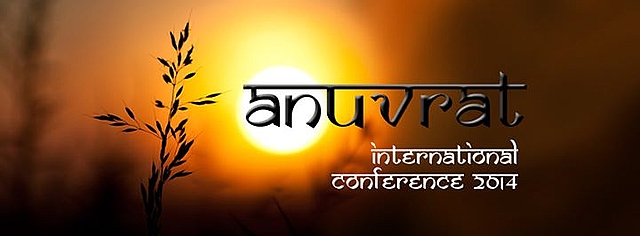
Anuvrat International Conference
Abstract
Ahimsa Anuvrata: A Sustainable Imperative for a Culture of Peace
We are constantly being astonished at the amazing discoveries in the field of violence. But I maintain that far more undreamt-of and seemingly impossible discoveries will be made in the field of nonviolence.
Mahatma Gandhi
If an atom (anu) has in it the monstrous power to destroy the world, amply demonstrated in the unprecedented holocaust at Hiroshima and Nagasaki, I want to tell the world that we have its counterpart in anuvrata—small or atomic vow—which alone has the power to ward off and counter the threat of an atom bomb.
Acharya Tulsi
Compassion, love, and nonviolence are universally recognized as values defining good life. Throughout history humans have yearned and searched for peace and harmony. And yet, each day all around us we see more and more of discord, increasing violence in every sector of life, growing inequalities of sorts, and animosity on the rise. Daily news reports are marked by cases of road rage, sky rage, and sideline rage, not to mention about the increasing instances of terror, unending stories of horror about wars, and growing conflicts around the world. Violence is pervading all walks of our lives such as homes, schools and colleges, airports, streets, game fields, and workplaces. Most disturbing is the growing trend of violence in schools and college campuses, which does not bode well for the future of humanity. The sad truth is that youngsters are growing up seeing violence not only as normal, but also necessary, and, in some cases, even "cool."
Why is it that the human quest for peace has often given rise to violence and war? Why is it that wars are often seen as vehicles of peace? Can a proper understanding of ahimsa as a core human virtue offer us an efficacious and enduring way to resolve conflicts and achieve peace? Is there a connection between inner peace and outer peace?
In this presentation, I explore the significance of ahimsa as a way of life for sustaining peace, for cultivating amity, and for building harmonious relationships among individuals, communities and nations. For this purpose, I focus on the following:
(1) the meanings of peace;
(2) the scope of ahimsa;
(3) the significance of ahimsa for creating a culture of peace; and
(4) the role of education and training in making ahimsa a way of life.
Finally, drawing upon the wisdom of Acharya Tulsi, this presentation will conclude with the discussion of how the "atomic" vow of nonviolence is significant as a transformative force, and, therefore, a sustainable imperative for a culture of peace and harmony.
 Dr. Tara Sethia
Dr. Tara Sethia